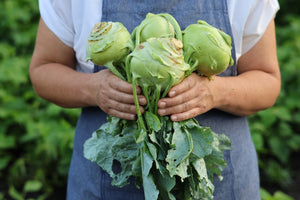How to Build A Compost Bin: DIY Instructions for Absolute Beginners
CompostYou don’t need to invest hundreds of dollars in a fancy compost bin. With a few tools and a free afternoon, you can do it yourself. Building your own compost bin can be a great way to turn your food scraps and yard waste into nutrient-rich soil for your garden.

There are lots of ways to build compost bins. These simple instructions are quick and easy to build, so you can start composting right away.
A Simple Way to Build a Compost Bin
Materials List for Compost Bin
- 4 - 4x4 wooden posts, cut to your preferred height (these are the corners)
- 16 - 2x6 wooden boards, cut to your preferred length (these form the walls)
- Screws or nails
- Hinges
- Hardware cloth or chicken wire
- Locking mechanism (optional)


Compost Bin Building Instructions
1 - Choose a location for your compost bin that is level and has good drainage. A sunny spot will provide heat that will help your compost break down faster.
2 - Measure out a square or rectangular area for your compost bin. It can be any size, but 3x3 or 4x4 feet is a good size for beginners. If you think you might need more room to expand later, make sure you leave space for that.
3 - Cut your wooden posts and boards to the desired dimensions of your bin.
4 - Nail or screw four 2x6 boards to the outside of two posts to form an outer wall. Do this again to form the opposite, parallel wall.
5 - Complete your square or rectangle by joining the parallel walls with the remaining 2x6 boards at right angles. Be sure to check that the corners are square using a framing square.
(Note: Some people prefer an open compost bin style with one side open. If you choose to only complete three walls, you can create a sturdier bin by nailing at least one 2x6 across the bottom to create a base.)
6 - Cut the hardware cloth or chicken wire to the size of the sides of your bin and attach it to the posts with screws. You may need to twist the chicken wire to get it completely secure.
7 - Attach the hinges and locking mechanism to the front of the bin to create a door that you can open to add compost materials and remove finished compost.
8 - Place the bin on top of the soil in your chosen location. You may want to add a layer of gravel or wood chips to help with drainage.
9 - Begin adding compostable materials to your bin, including food scraps, leaves, grass clippings, and small twigs. Be sure to mix them regularly with a pitchfork or shovel to help the compost break down evenly.
And that's it! With regular additions of organic material and a little bit of patience, you should have a rich, dark compost in just a few months.

Variation: Pallet Compost Bin
For an even easier project, the pallet compost bin is a DIY variation of the design we’ve already laid out. If you have access to old pallets, they are a handy shortcut to creating your frame. You’ll follow all of the above instructions, but instead of cutting posts and boards, you can join pallets together at 90° angles to create your rectangular bin. If your pallets are in good shape, two nails or screws at each corner will create a secure fit, or you can use L-brackets for extra security.

DIY Three-Bin Composting Systems
If you want to expand your compost bin for more room, consider a Three Bin system. This allows the gardener to have stages of compost production. These systems just add two more rectangular additions to the original design using the outer walls of the original bin. You’ll have one structure with three composting compartments for staging your compost.
To use a 3-bin composting system, you’ll fill your first bin as normal. Once it’s at capacity, maintain the compost by turning it regularly as it breaks down. Meanwhile, begin to fill the next bin with alternating layers of brown and green materials. Eventually, you’ll have 3 stages of compost: newly added materials that haven’t begun to break down, compost that is busy “cooking,” and finished compost ready to use in the garden.

There you have it: three easy compost bin systems that almost anyone can build in an afternoon. If you can get a helper, even better! Once you’re done, simply layer in some greens and browns, and you’ll be well on your way to making rich compost for your garden.
Written by Teresa Chandler
Popular Posts
-

What is Kohlrabi? A Guide to Growing and Eating This Unique Vegetable
-

How to Grow Scrumptious Alpine Strawberries from Seed






Leave a comment